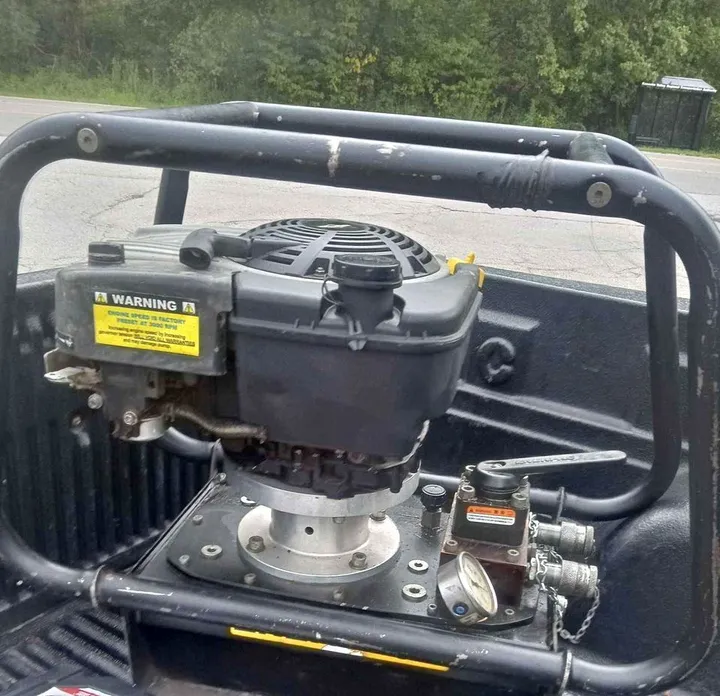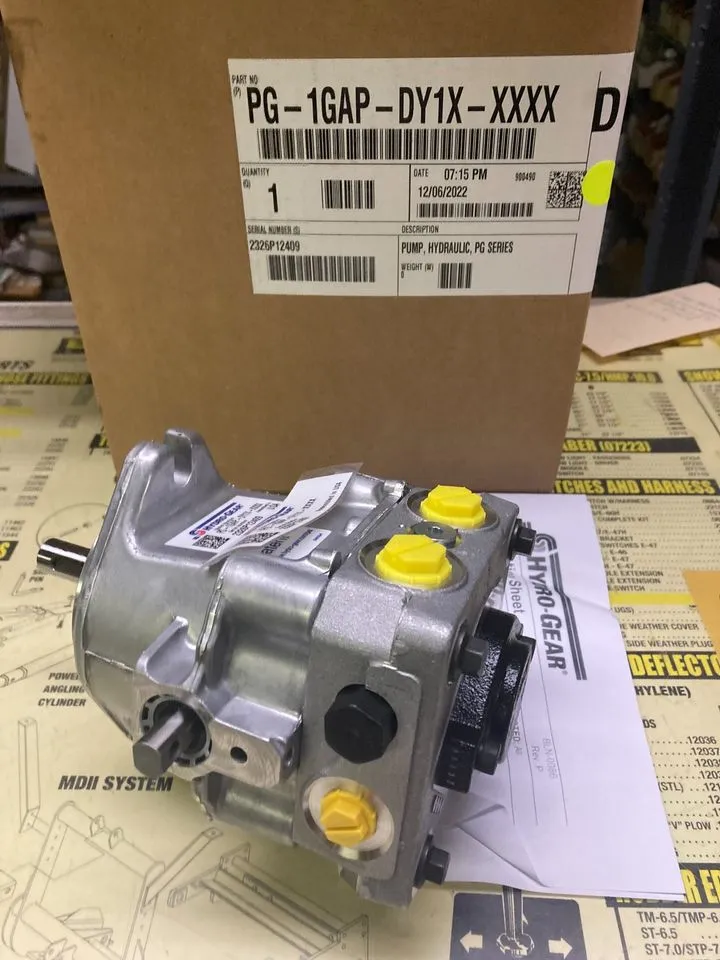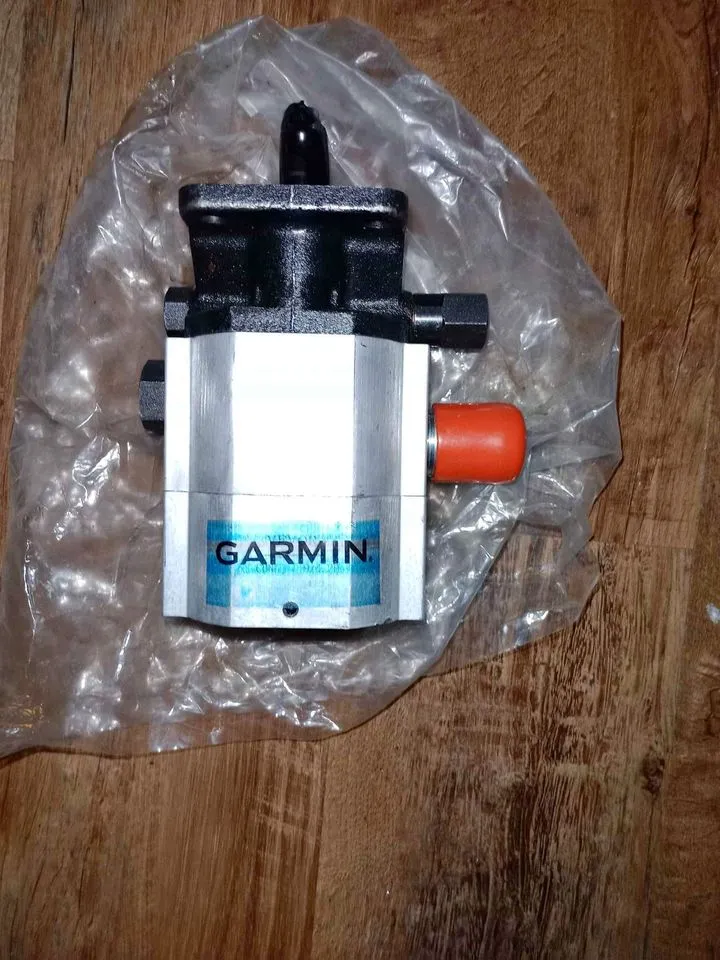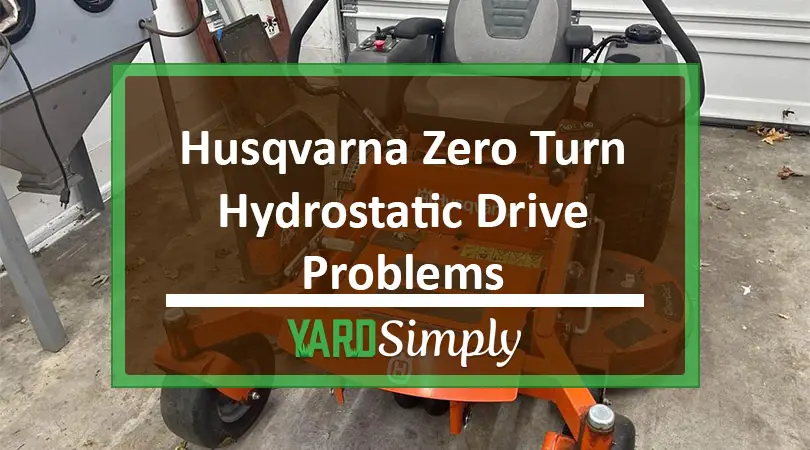As an experienced lawn care professional with years of hands-on experience in maintaining and repairing Husqvarna mowers, I’m here to share my knowledge on this specific issue.
In this guide, you’ll find concise, expert advice on identifying, troubleshooting, and resolving Husqvarna zero turn hydrostatic drive problems.
My aim is to provide you with practical, easy-to-follow information that will help you keep your mower running smoothly, ensuring that you can trust the insights and solutions offered.
Quick Summary
- The article provides troubleshooting methods and solutions for common Husqvarna zero turn mower issues like fluid leaks, unresponsive shifting, and loss of power, highlighting the importance of regular maintenance such as checking oil levels and lubricating components.
- It emphasizes regular inspections, especially for the hydrostatic drive system, to prevent issues like fluid leaks and loss of power, and underscores the need for routine maintenance tasks like cleaning and lubricating.
- Detailed guidance is offered for specific problems, including purging air from hydraulic lines and adjusting transmission control arms, to enhance mower performance.
- The article advises seeking expert help for more complex problems, such as sudden jerks and consistent loss of drive power, to ensure proper diagnosis and repair.
Common Hydrostatic Drive Issues in Husqvarna Zero Turn Mowers
Common issues include fluid leaks, unresponsive shifting, loss of power, air in lines, and overheating, all of which can affect your mower’s performance.
These problems can arise from a variety of factors, such as worn drive belts, air in the lines, or old hydraulic fluid. A decrease in speed when driving uphill is another issue that may be related to the parking brake or the hydrostatic transmission itself.
Also Read: Husqvarna Zero Turn Mower Problems & Fixes
1. Fluid Leaks
Fluid leaks in hydrostatic drives can be the result of immense pressure applied to rubber parts, seals, and hoses over time, leading to wear and tear and eventual cracking.
These leaks can cause a decrease in hydraulic pressure within the transmission system, compromising your mower’s performance.
If left unaddressed, fluid leaks can lead to further damage, such as a destroyed crankcase, which would require a new component to be installed.
To effectively address and prevent fluid leaks in your Husqvarna mower, which can significantly impact its performance, follow these solution-oriented steps:
- Regular Inspection: Conduct frequent inspections of your mower, particularly focusing on the hydrostatic drive system for any signs of oil leaks. This proactive approach is crucial in early detection.
- Immediate Response: Upon noticing any leaks, respond swiftly. Delayed action can lead to more severe damage, affecting the mower’s efficiency and potentially leading to costly repairs.
- Replace Worn Parts: Identify and replace any worn-out lines and components in the hydrostatic system. Regular wear and tear, especially under high-pressure conditions, can lead to leaks.
- Focus on High-Stress Periods: Pay extra attention during times when the mower is under extreme pressure, as these conditions can exacerbate existing weak points in the system.
- Maintain System Integrity: By promptly addressing fluid leaks and ensuring all components are in good condition, you help maintain the integrity of the mower’s hydraulic drive system. This is key to its smooth and efficient operation.
Related Articles:
- Husqvarna Zero Turn Hydraulic Fluid Change
- How to Change Hydraulic Fluid in Zero Turn Mower
- Gravely Zero Turn Hydraulic Problems: Unveiling Issues
2. Unresponsive Shifting
Degradation of mower components can result in unresponsive shifting, as prolonged usage can lead to damaged or worn-out parts, impeding the functionality of the shifting mechanism.
Inadequate adjustments to the hydrostatic drive transmission control arm can also cause unresponsive shifting, affecting components such as the fuel pump, fuel line, carburetor, recoil, hydrostatic drive transmission, and linkage.
To address unresponsive shifting in your Husqvarna mower, follow these solution-focused steps:
- Inspect for Worn Components: Begin by thoroughly inspecting your mower for any signs of wear and tear. Focus on key areas that contribute to the shifting mechanism, such as the transmission control arm, motion control levers, and throttle control components. Identifying and addressing any worn parts is crucial for ensuring the responsiveness of the shifting mechanism.
- Adjust the Transmission Control Arm: Check the transmission control arm for proper alignment and function. Make necessary adjustments to ensure it is operating smoothly and effectively. This is a critical step in resolving unresponsive shifting issues.
- Fine-Tune Motion Control Levers: Examine the motion control levers to ensure they are functioning correctly. Adjust them as needed to improve responsiveness. These levers play a significant role in how the mower shifts and moves, so proper adjustment is key.
- Optimize Throttle Control Components: Ensure that the throttle control and related components are working correctly. Any issues here can impact the overall shifting mechanism of the mower. Adjust or replace parts as necessary to maintain optimal performance.
- Test and Confirm Smooth Operation: After making these adjustments and replacements, test your mower to confirm that the shifting issue has been resolved. The mower should now operate smoothly and efficiently, with responsive shifting.
3. Loss of Power
Loss of power can result from low fluid levels, clogged filters, or faulty pumps and motors. A low fluid level can lead to a loss of power, as the pump requires an adequate supply of fluid to generate the necessary pressure for power production.
Faulty pumps and motors can also cause a decrease in power output, leading to a decline in mower performance.
To effectively address and prevent loss of power in hydrostatic drives of your Husqvarna mower, follow these practical steps:
- Check Fluid Levels: Regularly inspect the fluid levels in your hydrostatic drive. Ensure they are at the recommended levels as per your mower’s manual. Low fluid levels can lead to a loss of power and efficiency in the drive system.
- Clean or Replace Clogged Filters: Examine the filters in your hydrostatic drive system. If they are clogged, clean them thoroughly. If cleaning does not restore their functionality or if they are significantly worn, replace them with new ones. Clogged filters can restrict fluid flow, leading to power loss.
- Inspect Pumps and Motors: Conduct a detailed inspection of the pumps and motors in the hydrostatic drive system. Look for any signs of wear, damage, or malfunction. These components are crucial for the proper functioning of the drive system, and any issues here can result in a noticeable loss of power.
- Maintain Components Regularly: Establish a routine maintenance schedule for these components. Regular maintenance helps in early detection of potential issues and prevents them from escalating into major problems.
- Ensure Efficient Operation: After performing these checks and maintenance tasks, test your mower to ensure it operates efficiently. A well-maintained hydrostatic drive should deliver consistent power and performance.
4. Air in the Hydraulic Lines

Air in the hydraulic lines can lead to pressure issues and inadequate performance, hindering your mower’s ability to function properly.
This can occur when air bubbles become trapped within the hydraulic system, preventing the proper flow of fluid and disrupting the hydraulic pressure needed for smooth operation.
To resolve the issue of air trapped in the hydraulic lines of your Husqvarna mower, which can cause pressure issues and hinder performance, follow these steps:
- Identify the Presence of Air: First, determine if air is indeed present in the hydraulic lines. Symptoms may include erratic operation of the mower, a spongy feel to the controls, or unusual noises from the hydraulic system.
- Purge the Hydraulic System: The most effective way to remove air is to purge the hydraulic system. This can be done by following these steps:
- Locate the manual bypass lever or valve on your mower. This is often found near the rear of the machine.
- Engage the bypass lever to allow free circulation of the hydraulic fluid.
- Start the mower and gently move the motion control levers forward and backward several times. This action helps to push the air bubbles through the system and out into the reservoir.
- Continue this process for a few minutes, ensuring that you cover both forward and reverse motions.
- Check and Refill Hydraulic Fluid: After purging the system, check the hydraulic fluid level. If it’s low, refill it to the recommended level as per the manufacturer’s guidelines. Low fluid levels can contribute to air getting into the system.
- Bleed the System if Necessary: In some cases, you may need to bleed the system to ensure all air is removed. This involves opening bleed valves in the hydraulic system, allowing air to escape, and then closing them once only fluid is coming out.
- Test the Mower: Once you have purged and possibly bled the system, test the mower. Operate it under normal conditions and observe if the performance has improved and the previous symptoms of air in the lines have disappeared.
- Regular Maintenance: To prevent future occurrences, ensure regular maintenance of the hydraulic system. This includes checking for leaks, ensuring tight connections, and maintaining the correct fluid levels.
5. Overheating
Overheating in Husqvarna hydrostatic drive mowers can lead to significant problems, impacting both efficiency and longevity of the mower.
This issue often arises from prolonged use under high-stress conditions, inadequate cooling, or clogged air vents that impede proper heat dissipation.
Overheating can cause the hydraulic fluid to degrade faster, reducing its effectiveness in lubricating and cooling the transmission system.
This not only leads to a decrease in mower performance, with symptoms like loss of power or erratic operation, but also increases the risk of more severe damage to the transmission and other critical components.
Regular maintenance, such as cleaning air vents, checking fluid levels, and ensuring the cooling system is functioning properly, is essential to prevent overheating and maintain optimal mower performance.
To address overheating in Husqvarna hydrostatic drive mowers, you can follow this simplified five-step solution:
- Limit High-Stress Operation: Avoid using your mower for extended periods under high-stress conditions. Break down large mowing tasks into shorter sessions to prevent the system from overheating.
- Maintain Cooling System: Regularly check and clean the cooling components, including air vents and radiators if applicable. Ensure they are free from debris and obstructions to facilitate effective heat dissipation.
- Check Hydraulic Fluid Levels: Routinely inspect the hydraulic fluid levels. Low levels can lead to inadequate lubrication and cooling, contributing to overheating. Refill or replace the fluid as necessary, following the manufacturer’s guidelines.
- Clean Air Filters and Vents: Keep air filters and vents clear of grass, dirt, and debris. This step is crucial for maintaining proper airflow, which is essential for cooling the mower’s engine and hydraulic system.
- Monitor and Respond to Overheating Signs: Be vigilant for signs of overheating, such as loss of power or erratic mower behavior. If these symptoms are observed, stop the mower, allow it to cool down, and perform the necessary checks and maintenance.
Maintenance Tips for Husqvarna Hydrostatic Drives

Regular maintenance of your Husqvarna mower’s hydrostatic drive is essential to ensure optimal performance and prolong the life of the transmission. This includes checking oil levels, inspecting belts and hoses, and cleaning and lubricating components.
Performing these maintenance tasks aids in preventing hydrostatic drive problems and ensuring the smooth operation of your mower.
Husqvarna recommends using 10w-30 non-synthetic engine oil for their hydrostatic transmissions. The oil should be changed after the first 50 hours of use and then every 200 hours thereafter.
As low oil levels can lead to performance issues and potential transmission damage, verifying oil levels is a vital maintenance task.
Regular Oil Checks
It’s important to use the recommended oil type for your specific Husqvarna hydrostatic drive to maintain optimal performance and prevent damage to the transmission.
Low oil levels in the transmission can lead to decreased power and potential damage to the hoses and connections.
Routinely checking the oil level and adding oil when necessary ensures adequate lubrication and effectiveness of the hydrostatic drive system.
Be sure to consult your owner’s manual for specific oil level recommendations for your particular mower model.
Inspecting Belts and Hoses
Regular inspection of these components is advised as part of your overall mower maintenance routine, not merely once a year.
Signs of wear and tear on belts may include excessive grass clippings on the deck and general wear over time, while hoses may show blockages, holes, leaks, or low-pressure water supply.
Regular inspection of these components allows for the early detection and resolution of any issues, thereby ensuring the longevity of your mower’s hydrostatic drive.
Related: How to Replace Drive Belt on Husqvarna Zero Turn Mower
Cleaning and Lubrication
Having your Husqvarna hydrostatic drive professionally serviced and cleaned annually at each season’s end is recommended.
For cleaning and lubrication, Husqvarna recommends using high-quality 10W/30 transmission oil with a friction modifier.
This oil can help remove dirt and debris, while also providing essential lubrication to keep your hydrostatic drive running smoothly.
Remember to consult your owner’s manual for specific recommendations on cleaning and lubricating your particular mower model.
When to Seek Professional Help
While performing regular maintenance and basic troubleshooting can help resolve many hydrostatic transmission problems, there are instances when seeking professional help is the best course of action.
Hydrostatic transmission issues that may be beyond the scope of owner repair include:
- Sudden jerks
- Unsmooth acceleration
- Hydraulic fluid leaks
- Consistent loss of drive power
If you’ve attempted DIY solutions without success or suspect a complex issue with your mower’s hydrostatic drive, it’s advisable to contact your dealer’s service department for professional assistance.
They can help diagnose and resolve the problem, ensuring your Husqvarna mower continues to function at its best.
Troubleshooting Husqvarna Hydrostatic Transmission Issues

Troubleshooting Husqvarna hydrostatic transmission issues involves the following steps:
- Identify the problem.
- Check for fluid leaks.
- Adjust the transmission control arm.
- Purge the hydraulic drive system.
- Inspect for other potential issues.
Implementing these solutions can help restore mower performance.
Careful observation of your mower and understanding of common hydrostatic transmission issues enable you to identify the root cause of the problem and execute necessary steps to rectify it.
Whether adjusting components, repairing damaged parts, or replacing worn-out elements, implementing these solutions can help restore your mower’s performance and keep your lawn looking its best.
Identifying the Problem
Identifying the problem with a hydrostatic transmission requires careful observation and knowledge of common issues.
When diagnosing hydrostatic transmission issues in Husqvarna mowers, be mindful of signs such as:
- Hydraulic fluid leaks
- Impeded response to shifting
- Presence of air in the lines
- Inability to move forward or backward
- Inability to start
Understanding the potential causes of hydrostatic transmission failure can help you pinpoint the issue and determine the best course of action to resolve it.
Some common causes include:
- Aging hydraulic fluid
- Worn drive belts
- Air in the lines
- Fluid leaks
- Mechanical equipment malfunction
By identifying the specific cause of the failure, you can take appropriate steps to fix the problem and ensure the smooth operation of your hydrostatic transmission.
Implementing Solutions
Once you’ve identified the problem with your mower’s hydrostatic drive, you can implement the appropriate solutions to restore its performance.
This may involve:
- Adjusting the transmission control arm
- Purging the hydraulic drive system
- Checking for hydraulic fluid leaks
- Verifying proper fluid levels
In some cases, a replacement for a faulty hydrostatic drive may be necessary if:
- The transmission system experiences sudden jerks, unsmooth acceleration, or unexpected motion
- The motor or engine is slow or sluggish
- The hydrostatic transmission motor does not turn over properly
- There is a hydraulic fluid leak and the lines need to be replaced
Addressing these issues can help restore your mower’s performance and maintain your lawn’s pristine appearance.
Summary
Husqvarna zero turn mowers are designed to make lawn care easier and more efficient, but hydrostatic drive problems can sometimes hinder their performance.
By understanding common issues, performing regular maintenance, and implementing appropriate troubleshooting measures, you can keep your mower running smoothly and efficiently.
And remember, when in doubt, don’t hesitate to seek professional help to ensure your mower continues to perform at its best.
Frequently Asked Questions
What is a common problem with hydrostatic transmission?
Hydrostatic drives can present issues with temperature control, pre-charging, and over-pressure protection, which can be difficult to manage.
How can one confirm a hydrostatic drive speed problem?
To confirm a hydrostatic drive speed problem, one should record the indicator position for a specific command voltage to the amplifier and check the case drain flow, if applicable.
How do you get air out of a hydrostatic transmission?
Push the motion control levers forward and hold for five seconds, then to full reverse position and hold for another five seconds. Repeat this process three to five times to purge air from the hydraulic transmission system. Engage the tow valve, push the drive pedal to full forward and hold for five seconds, then disengage the tow valve.
What are the most common hydrostatic drive issues in Husqvarna zero turn mowers?
The most common hydrostatic drive issues in Husqvarna zero turn mowers are fluid leaks, unresponsive shifting, and loss of power.
How often should I check the oil level in my Husqvarna hydrostatic drive?
Check the oil level in your Husqvarna hydrostatic drive regularly and add oil as needed to ensure optimal performance.


